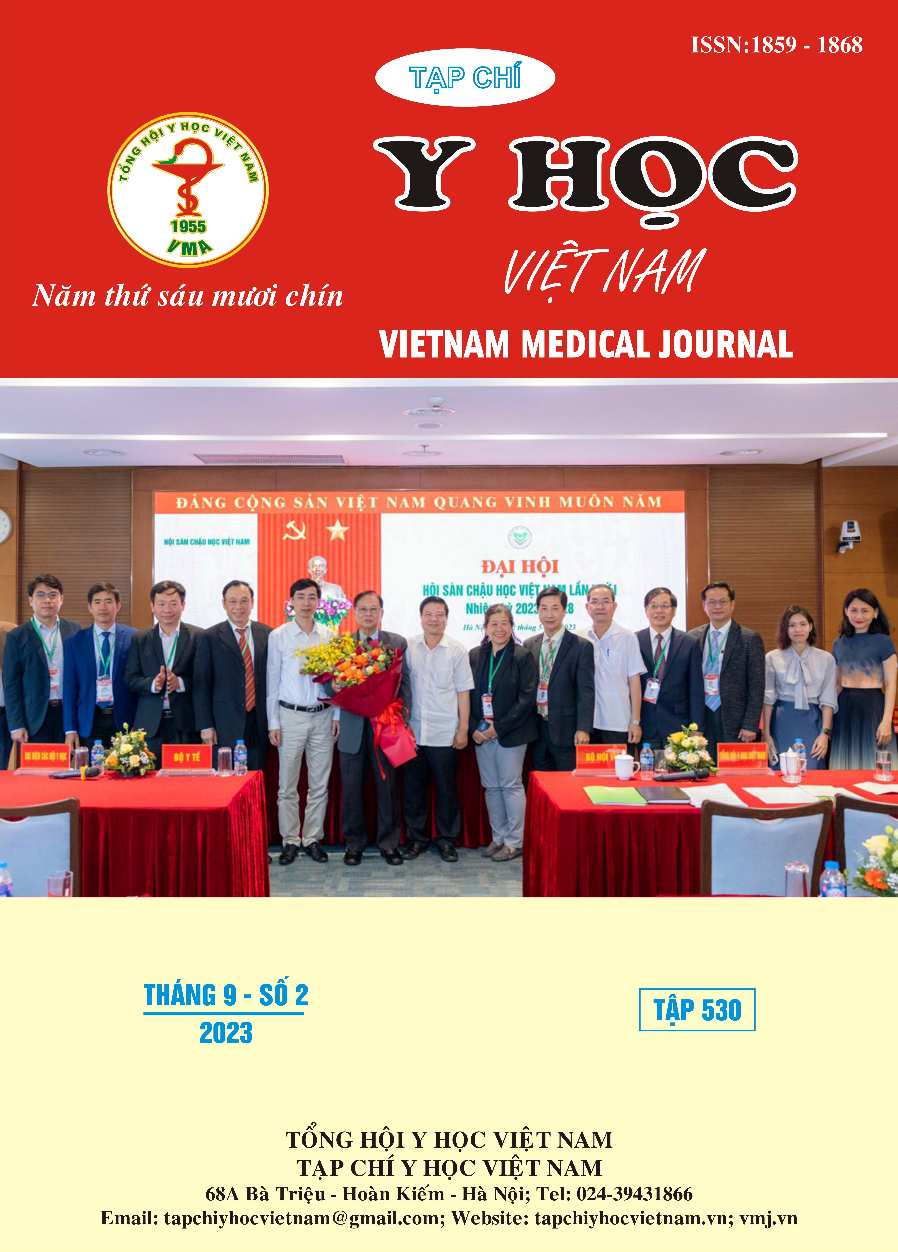CHARACTERISTICS OF MICRO-WRINKLES TEXTURE ON THE SKIN SURFACE IN VIETNAMESE ADULTS
Main Article Content
Abstract
Objectives: To study the characteristics of the skin surface in Vietnamese adult. Subjects and methods: This study was described cross-sectionally on 100 adult men from 20 to 85 ages, with 3 age groups (Young adults from 20-39; middle - aged people from 40 to 59 and elderly people from over 60 years old). Images of wrinkles on the replicas sample which from the skin surface of subjects studied by the scanning electron microscope (SEM) at the Morphology Derpartment in Institute 69. The research criteria include distance, width and depth of skin wrinkles lines in the inner forearm and back of the hand of the same subjects and compare them in the study groups. Results: The wrinkles skin surface is mainly intersected by primary and secondary lines. They run through forming “polyhedric mesh structures” shapes with polygons, triangles, quadrilaterals, trapezoids and rectangles. Shape and texture of wrinkle composed of ridges and furrows with the width, depth and distance of them changes closely related to skin aging increase with age and the sun-exposed area. Conclusion: The morphological characteristics of micro-wrinkles, width, depth and distance have markedly changed according to age and anatomical location, which are significantly affected by skin aging. Sun exposure areas of skin human are more damaged.
Article Details
Keywords
Lão hoá da, vi nếp nhăn da, replica skin, wrinkles, skin surface
References
2. Limbert G, Masen MA, Pond D, et al. Biotribology of the ageing skin—Why we should care. Biotribology. 2019;17:75-90. doi:10.1016/j.biotri.2019.03.001
3. Limbert G, Kuhl E. On skin microrelief and the emergence of expression micro-wrinkles. Soft Matter. Feb 21 2018;14(8):1292-1300. doi:10.1039/ c7sm01969f
4. Contet JL. A histological study of human wrinkle structures: comparison between sun exposed areas of the face, with or without wrinkles, and sun-protected areas. British Journal of Dermatology 1999;140:1038–1047.
5. Suprijanto, Nadhira; V. Digital Dermatoscopy Method Human Skin Roughness analysis. ITB J ICT. 2011;5(1):57-71.
6. Rittié L, Fishe; GJ. UV-light-induced signal cascades and skin aging. Ageing Research Reviews. 2002;1(USA):705–720.
7. Poljšak B, Dahmane; RG. Intrinsic skin aging: The role of oxidative stress. Acta Dermatovenerol APA. 2012;21:33-36. doi:10.2478/v10162-012-0009-0
8. Fisher GJ, Quan T, Purohit T, et al. Collagen fragmentation promotes oxidative stress and elevates matrix metalloproteinase-1 in fibroblasts in aged human skin. Am J Pathol. Jan 2009; 174(1):101-14. doi:10.2353/ajpath.2009.080599
9. Chung JH. Aging and photoaging. J Am Acad Dermatol. 2003;49(4):690-698. doi:10.1016/S0190-9622(03)02127-3
10. Lavker RM, Zheng P, Dong G. Aged Skin: A Study by Light, Transmission Electron, and Scanning Electron Microscopy. Journal of Investigative Dermatology. 1987;88(3):44-51. doi:10.1038/jid.1987.9


